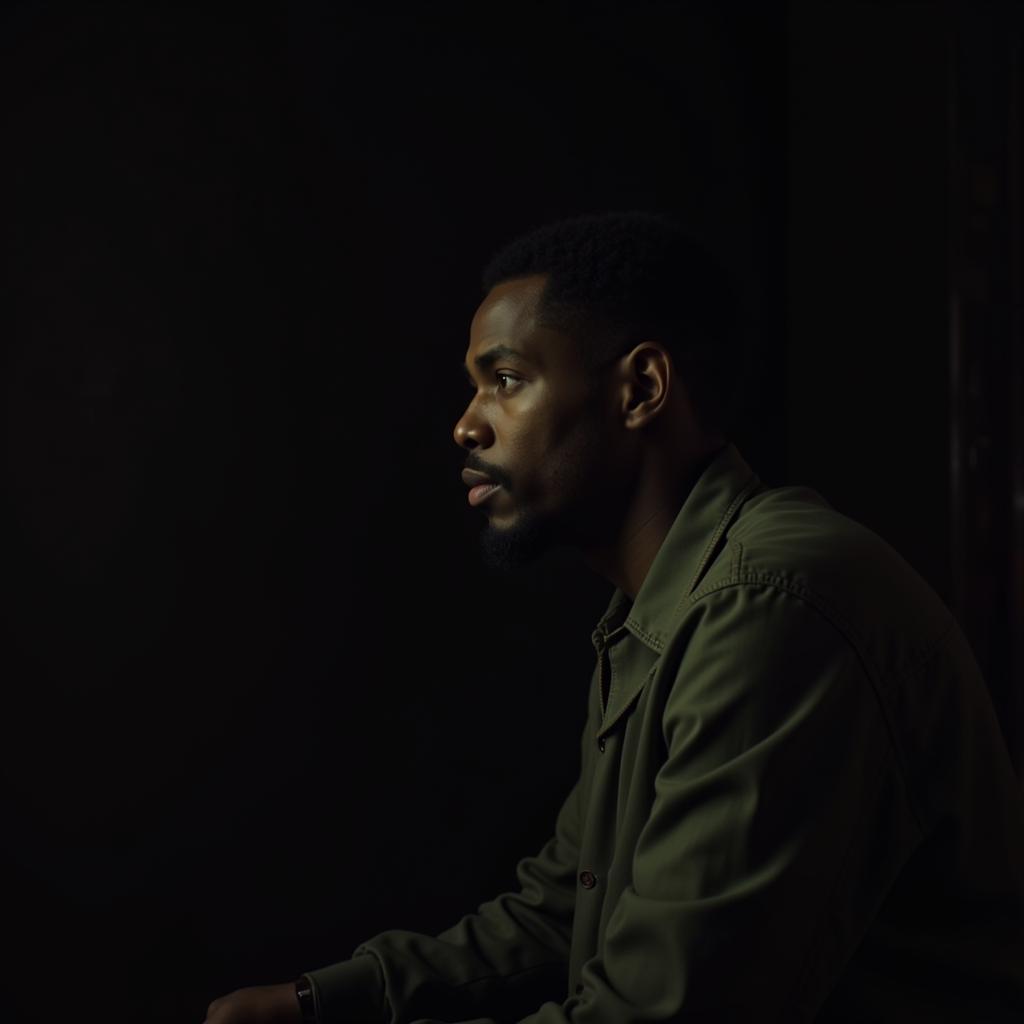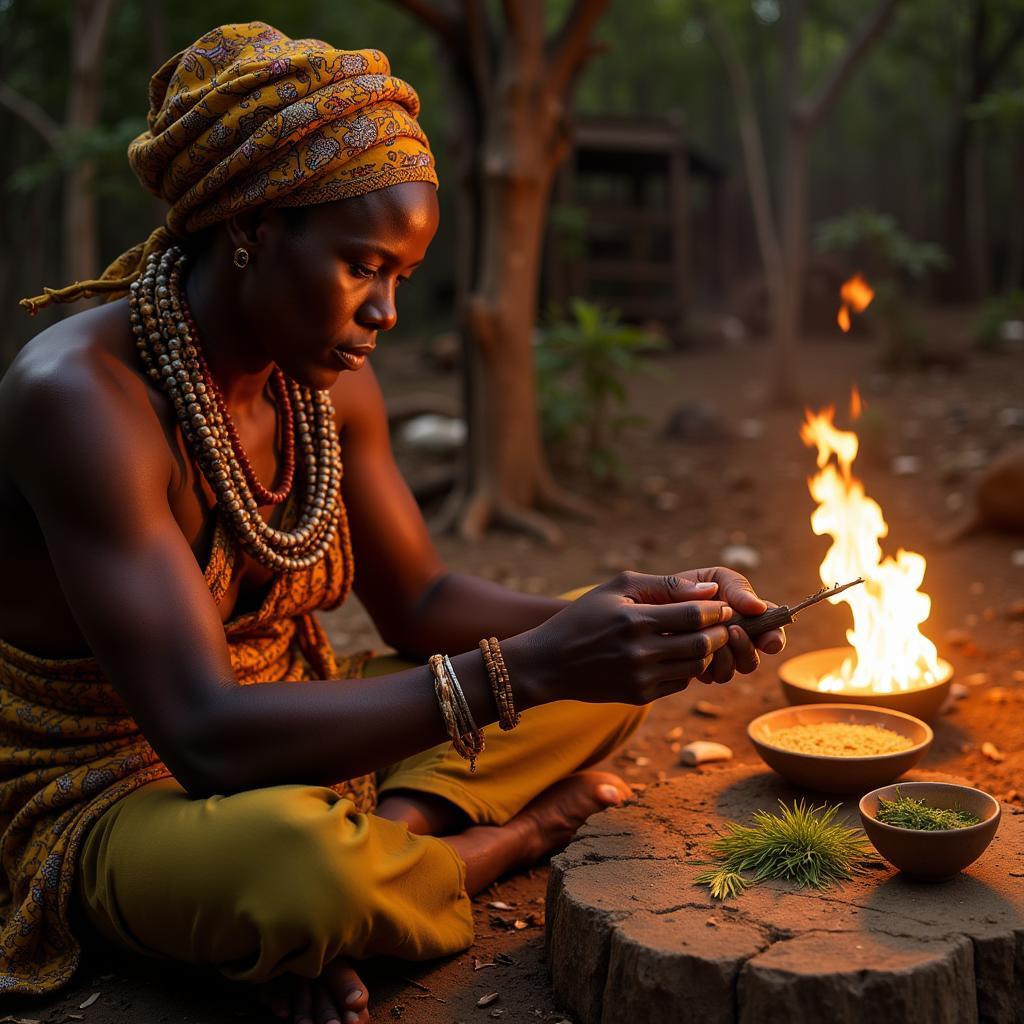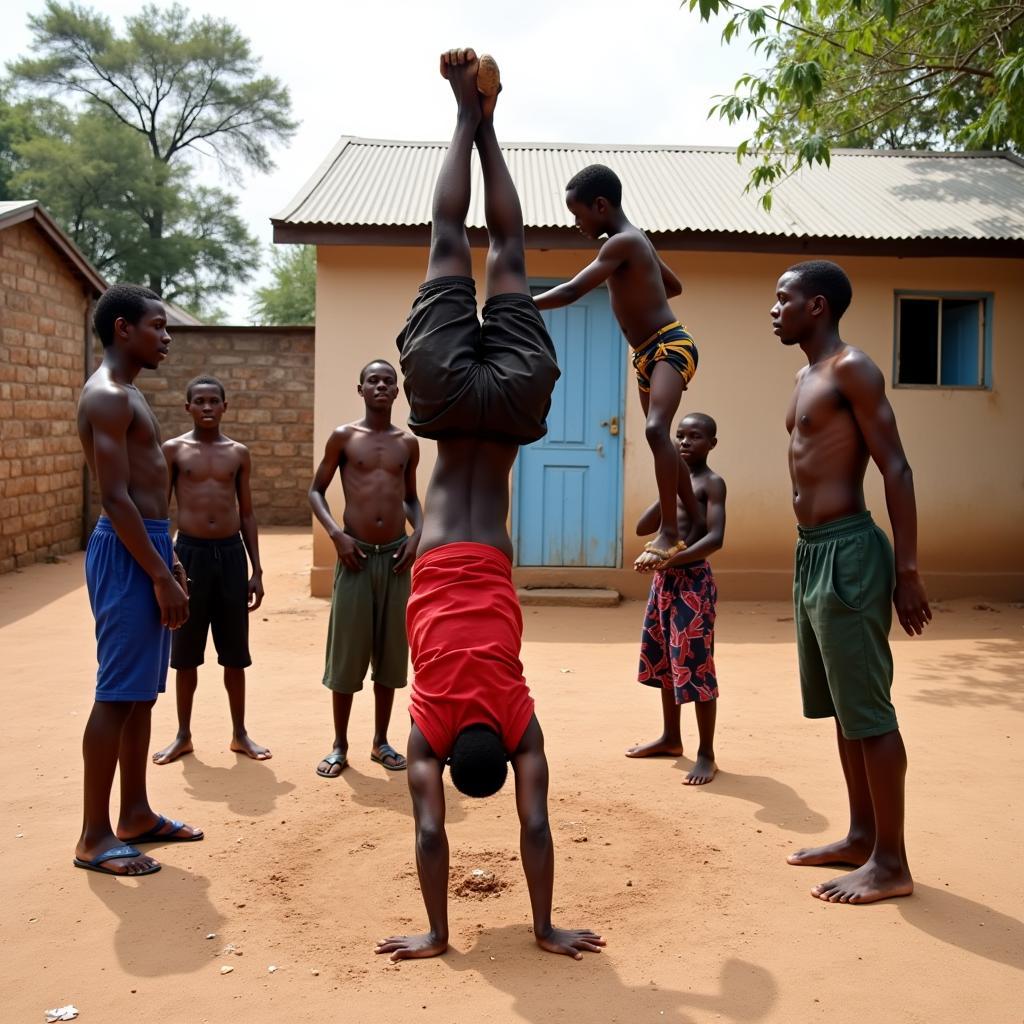1950s African American Men’s Fashion: A Style Revolution
1950s African American men’s fashion was a vibrant mix of sharp tailoring, bold colors, and a growing sense of self-expression. This era saw a shift from the utilitarian styles of the war years to a more refined and sophisticated look, reflecting the changing social and cultural landscape. From the rise of jazz and the bebop era to the burgeoning Civil Rights Movement, fashion became a powerful tool for African American men to assert their identity and challenge societal norms.
The Rise of the Zoot Suit’s Influence
While the zoot suit craze peaked in the 1940s, its influence continued to resonate in 1950s African American men’s fashion. The zoot suit, with its high-waisted, wide-legged trousers and long coats, represented a rebellious spirit and a rejection of mainstream fashion. While toned down, the silhouette continued to inspire the looser, more comfortable fits seen in the 1950s. This influence manifested in the wider cut trousers and longer jackets.
Sharp Suits and the Ivy League Look
The 1950s witnessed the rise of the “Ivy League” or “preppy” look, influencing African American men’s fashion. This style emphasized clean lines, slim-fitting suits, and a more conservative aesthetic. Think tailored jackets, button-down shirts, and thin ties. This look was embraced by many African American men, particularly those in the burgeoning middle class, as a symbol of upward mobility and sophistication.
What did the Ivy League look consist of? It included tailored jackets, button-down shirts, and thin ties, projecting an image of sophistication and success.
The Bold and the Bright: Hats and Accessories
Hats remained an essential part of 1950s African American men’s fashion. Fedora hats, pork pie hats, and trilbies were popular choices, adding a touch of flair and individuality to any outfit. Bold colors and patterns were also embraced, from brightly colored shirts and ties to patterned socks and pocket squares. These accessories provided a way for men to express their personal style within the more structured framework of the suit.
The Influence of Music and Culture
The music scene, particularly jazz and bebop, played a significant role in shaping 1950s African American men’s fashion. Musicians like Miles Davis and John Coltrane became style icons, inspiring a generation with their cool and sophisticated attire. This often included turtlenecks, berets, and a more relaxed approach to tailoring. This influence reflected the growing cultural impact of African American artists and their embrace of individuality.
Conclusion
1950s African American men’s fashion was a period of transformation, reflecting the changing social and cultural dynamics of the era. From the lingering influence of the zoot suit to the embrace of the Ivy League look, fashion became a powerful tool for self-expression and a symbol of progress. This era laid the groundwork for the fashion revolutions to come in the following decades, cementing the influence of African American style on mainstream fashion.
FAQ
- What was the most popular hat style for African American men in the 1950s? Fedora hats, pork pie hats, and trilbies were all popular choices.
- How did the zoot suit influence 1950s fashion? Its silhouette inspired looser, more comfortable fits, though more tailored than the original zoot suit.
- What was the “Ivy League” look? It emphasized clean lines, slim-fitting suits, and a more conservative aesthetic.
- Which musicians influenced 1950s fashion? Jazz and bebop artists like Miles Davis and John Coltrane.
- What role did color play in 1950s African American men’s fashion? Bold colors and patterns were embraced in shirts, ties, and accessories.
- Where can I find more information on 1950s fashion history? Check out our other articles on fashion history and cultural influences.
- What was the significance of 1950s African American men’s fashion? It marked a shift towards self-expression and sophistication, reflecting societal changes.
Common Questions
How did African American men afford these styles? While some styles were expensive, many men embraced DIY tailoring and alterations to create fashionable looks on a budget.
Were these styles accepted by mainstream society? Not always. Some styles, particularly those associated with jazz and bebop culture, were viewed with suspicion or disdain by some segments of society.
Suggested Further Reading
- Explore our article on the history of the zoot suit.
- Read about the impact of music on fashion in the 1950s.
- Discover more about the Civil Rights Movement and its influence on fashion.
For any further assistance, please contact us at Phone Number: +255768904061, Email: kaka.mag@gmail.com, or visit us at Mbarali DC Mawindi, Kangaga, Tanzania. We have a 24/7 customer service team.



